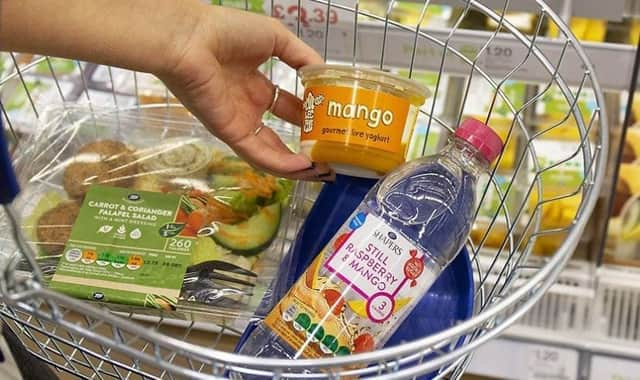Your ‘healthy’ supermarket meal deal could contain more than five servings of food


For many of us, meal deals are the go-to easy option for a working lunch.
They are so popular that every week, twice a week, a third of the UK population pops into a supermarket to get one.
Advertisement
Hide AdAdvertisement
Hide AdYet while the ‘deal’ aspect of the term obviously refers to the typical low cost price tag, the ‘meal’ aspect is up for debate.
The recommended portion sizes
A sandwich, a snack and a drink certainly constitutes a relatively light meal in the minds of most. But, according to portion size recommendations, what you typically get from Boots or the supermarket actually makes up multiple meals.
Wire reported that nutritionists said an example meal of one chicken and bacon sandwich, a packet of Doritos crisps and a 360ml smoothie adds up to 5.8 servings.
Obviously the above combination of food would not come close to satisfying a person for almost six meals, and the portion recommendations appear to be wildly off the mark in relation to reality.
Advertisement
Hide AdAdvertisement
Hide AdAccording to the back of a 55g packet of Doritos, 30g constitutes one serving. A 360ml bottle of Naked smoothie contains somewhere between two or three portions of the drink.
Other food portions examples have proven disappointing, too. The recommended 30g of cereal barely covers the bottom of a bowl, and most ready meals actually suggest that you are only supposed to eat half of what is in the packet.
One of the reasons for this could be that the food we eat has changed.
Portion sizes are not regulated
A 2016 report from Consensus Action on Salt and Health found that the level of salt in some common foods had increased over a period of six years.
Advertisement
Hide AdAdvertisement
Hide AdFood labelling laws also stipulate that food companies must provide mandatory ‘per 100g’ nutritional information on their labels, so that products can be compared. But they can also include their own ‘per portion’ sizes.
These portion sizes for a lot of products are not regulated by the government, and therefore companies rely on advice from elsewhere - such as nutritionists - for guidance.
Registered Dietitian and Spokesperson for the British Dietetic Association Helen Bond, told The Sun, “Eating out and grabbing food on the go is a daily occurrence for many of us and is an easy option when you’re time short to prepare nutritious food at home to take into work.
"Meal deals can be a balanced and cost-effective lunchtime option, but if you’re not careful in your choices and taking note of the suggested portion size on pack, your healthy eating principals can go out of balance – and you may end up consuming more calories, saturated fat, sugars and salt than you realise.”
Advertisement
Hide AdAdvertisement
Hide AdWhat should you be eating?
"Studies have shown that when we are presented with larger portions of foods, we tend to eat more without even realising - so, portion control can be difficult when eating on the go and out and about,” added Bond.
While the portion sizes do not seem realistic, nutritionists do advise keeping an eye on what you eat in meal deals as they can be high in sugar and salt.
Experts recommend checking the labels on your food, as even option labelled as ‘healthy’ can have a lot of calories in them. They also recommend not eating the same lunch every day, as this limits the variety in your diet.